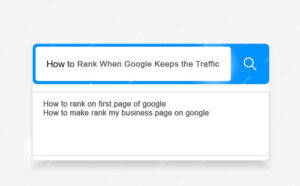Introduction
The emergence of GPT-3 (Generative Pre-trained Transformer 3) language model has revolutionized various industries, including email marketing, big data analysis, content creation, video content, market research, and SEO. However, to truly harness its power, it is essential to craft chatbot prompts in a way that elicits the best output. This article explores ten useful tips for effectively writing ChatGPT prompts, providing practical examples for email marketing, big data analysis, content creation, video content, market research, and SEO.
1. Be Clear and Specific
When crafting prompts, ensure clarity in your request. Avoid ambiguity and vagueness by providing clear instructions. For email marketing, a specific prompt could be: “Generate an engaging subject line for a promotional email targeting young professionals interested in fitness products.”
2. Use Examples
Including example responses when issuing prompts can improve the model’s performance. For big data analysis: “Analyze the data provided below and recommend three key insights that can drive marketing strategies.”
Example response: “Based on the data analysis, we found that customers aged 25-34 have the highest purchasing power, suggesting targeted marketing efforts towards this demographic.”
3. Provide Context or Background Information
For better results, give the chatbot relevant information about the topic. When it comes to content creation, provide details to guide the chatbot, such as style, tone, target audience, and specific keywords or phrases to include. E.g., “Write a blog post on the ‘Top 10 Ecommerce tips to increase sales for beginners, adopting an informative and approachable tone.”
4. Break Down Complex Tasks
Complex requests can lead to ambiguous responses. It is better to break them down into smaller, more manageable parts. In video content prompts, rather than asking for a complete script, divide it into stages like “Generate an attention-grabbing introduction for a product review video” or “Suggest engaging bullet points for the body of a tutorial video.”
You would like to read: What Is ChatGPT? And How Do Marketers Use This Tool?
5. Explore Alternative Approaches
To obtain diverse responses, encourage the chatbot to think outside the box. For market research, a prompt could seek alternative perspectives: “Provide creative suggestions for market research beyond traditional surveys and focus groups.”
6. Request Step-by-Step Explanations
For SEO-related prompts, it is sometimes helpful to ask for explanations from the chatbot regarding its approach to generating content. E.g., “Create an SEO-friendly meta description for a blog post about digital marketing tips, and explain why you chose specific keywords.”
7. Utilize Conditional Instructions
To provide context and improve precision, consider incorporating conditionals in your prompts. For email marketing, specify target audience segments to generate customized content. E.g., “Write an email promoting our new athletic shoes for customers over 40, highlighting their comfort and durability.”
8. Encourage Creativity and Critical Thinking
When seeking content creation prompts, encourage imaginative, thought-provoking responses. E.g., “Write an engaging story opening for a video game trailer that encompasses mystery, intrigue, and the element of surprise.”
9. Experiment and Iteration
The quality of output can be enhanced through multiple attempts and iterations. For big data analysis, try experimenting with different instructions, allowing the chatbot to refine its responses. E.g., “Based on the data provided, analyze customer behavior patterns, and make performance-focused recommendations for our marketing team. Iterate as per the suggestions if necessary.”
You would like to read: The Pros And Cons Of Content Generated By ChatGPT Or Any Other AI
10. Learn from Feedback and Fine-tune
Continuously learning from previous interactions helps in refining your prompts. Gather feedback from the chatbot’s generated content and adapt accordingly. For market research, prompt adjustment based on chatbot feedback could include: “Please suggest an improved market research approach based on feedback from our target audience in previous surveys.”
Conclusion
By applying these ten essential tips, you will be well-equipped to write effective ChatGPT prompts across various domains, including email marketing, big data analysis, content creation, video content, market research, and SEO. Remember, clear instructions, context, examples, and continuous improvement are key factors for achieving the best output from GPT-3.










